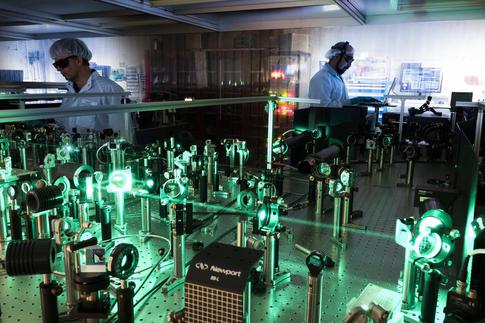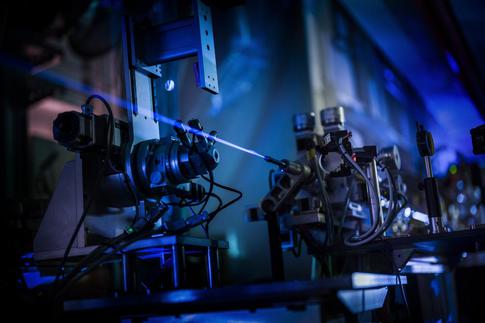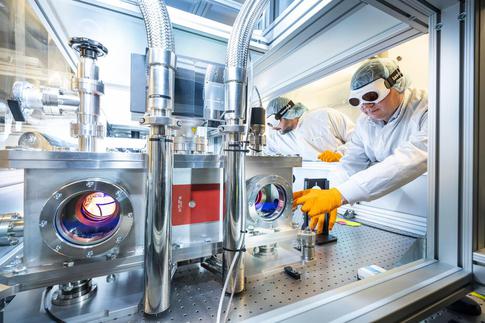XFEL: Day of Light: 60th anniversary of the laser
Day of Light: 60th anniversary of the laser
Sixty years after the first laser was operated on 16 May 1960 by Theodore Maiman at Hughes Research Laboratories in California, lasers have revolutionized everyday life as well as science. Lasers are also fundamental for research at the European XFEL. A public event on the European XFEL campus planned to celebrate this anniversary has been postponed to a later date.

The optical laser system for pump-probe experiments in the laser lab. Copyright European XFEL / Jan Hosan
In 1971, several years after the invention of the laser using visible light, the American physicist John Madey created laser like emissions based on accelerated electrons. The radiation produced by so-called free-electron lasers, or FELs, covers a wide range of the electromagnetic spectrum, from microwaves to X-rays.
A decade later the process of “self-amplified spontaneous emission”, or SASE, was described, first by Russian physicists Evgeny Saldin, Anatoli Kondratenko and Yaroslav Derbenev at the Institute of Nuclear Physics in Novosibirsk, and then independently by Italian-American physicist Claudio Pellegrini together with Rodolfo Bonifacio and Lorenzo Narducci. This process, where the X-ray light emitted from accelerated electrons interacts with other accelerated electrons to create an even brighter light signal, is the basis of X-ray free-electron laser (XFEL) technologies.
However, it was not until 2005 that the world’s first XFEL, the “free-electron laser in Hamburg” (FLASH) at Deutsches Elektronen-Synchrotron DESY welcomed its first users.

X-rays are invisible to the human eye. However, on this image the X-ray beam appears as a thin blue line – what we are actually seeing is glowing nitrogen molecules in the air lit up by the extremely intense X-ray beam. Copyright European XFEL / Jan Hosan
Today, in addition to the European XFEL, free-electron lasers in the hard, short-wavelength X-ray range are operational in the USA (LCLS), Japan (SACLA), Switzerland (SwissFEL) and South Korea (PAL-XFEL). Another large X-ray laser (SHINE) is planned in China and is scheduled to start operation in 2025.
XFELs now enable scientists to study the atomic structures of materials in unprecedented detail, but lasers operating with visible light are also crucial for research at large X-ray facilities such as European XFEL. By skillfully aligning powerful lasers producing visible light and X-rays, scientists can now shine light onto the intricate workings of biological and chemical reactions, and far off worlds. In so-called pump-probe experiments, lasers emitting pulses of extremely bright light are used to trigger reactions in, for example, light sensitive proteins. The X-ray laser is then used to capture an image of the structure of the protein after a carefully timed delay. By repeating this with different time delays between optical and X-ray lasers, a molecular movie can be produced – just like many still images can be pasted together to make a film.
Video: A year in three mins – watch the infrared pump-probe-laser being built at European XFEL in this time-lapse video.

The high intensity laser of the HIBEF user consortium at the HED instrument. Copyright European XFEL / Jan Hosan
Robert Feidenhans’l, European XFEL managing director: “60 years after the invention of the laser we now use powerful lasers to study the smallest details of the nanocosm. Lasers are an example on how a device has altered research and our lives in a way that was impossible to predict when it was invented.”
Further information: photos and video are available for download in the media database.
